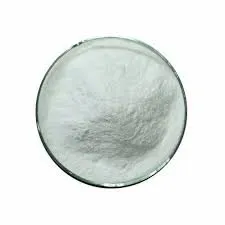
дек. . 26, 2024 01:24 Back to list
hpmc safety
HPMC Safety Ensuring Safe Use in Pharmaceutical Applications
Hydroxypropyl Methylcellulose (HPMC) is a widely used polymer in the pharmaceutical industry, particularly in drug formulations and as an excipient. This versatile compound is derived from cellulose and serves various functions, including acting as a thickener, stabilizer, and controlled-release agent. While HPMC is generally recognized as safe (GRAS) when used appropriately, it is crucial to consider safety aspects associated with its use to ensure the well-being of patients and healthcare providers alike.
Understanding HPMC
HPMC is a non-ionic, water-soluble polymer that has unique properties that make it suitable for various pharmaceutical applications. Due to its ability to form gels in the presence of water and its compatibility with many other ingredients, HPMC is commonly found in tablets, capsules, and topical formulations. Its role in modifying the release profile of active pharmaceutical ingredients (APIs) makes it an invaluable component in controlled-release formulations, improving therapeutic outcomes.
Safety Profile of HPMC
The safety profile of HPMC is supported by several studies and regulatory evaluations. The U.S. Food and Drug Administration (FDA) classifies HPMC as a safe ingredient when used within established guidelines. Similarly, the European Food Safety Authority (EFSA) has confirmed that HPMC poses no significant health risks when consumed in food products or used in pharmaceuticals. However, as with any excipient, safety concerns can arise if HPMC is not used correctly or if patients have specific sensitivities.
Potential Risks and Considerations
While HPMC is generally considered safe, certain factors should be assessed to minimize any potential risks
hpmc safety

1. Allergic Reactions Though rare, some individuals may experience allergic reactions to HPMC. Clinical professionals must be aware of this possibility, especially when prescribing medications containing HPMC to patients with known allergies to cellulose derivatives.
2. Interactions with Drugs HPMC can influence the bioavailability of certain medications by modifying their release characteristics. Healthcare providers should consider this interaction, particularly in patients taking medications with narrow therapeutic indices.
3. Proper Dosing The safety of HPMC also correlates with its appropriate dosage in formulations. Exceeding recommended levels can potentially lead to adverse effects, including gastrointestinal disturbances. It is essential for formulators to adhere to established guidelines to ensure safety.
4. Contamination Risks As with all pharmaceutical excipients, contamination during the manufacturing process can pose safety risks. Ensuring that HPMC is sourced from reputable suppliers and that it meets quality standards is critical in maintaining its safety profile.
Regulatory Oversight
Regulatory bodies globally impose stringent guidelines for the use of HPMC in pharmaceuticals. Manufacturers are required to conduct thorough safety assessments and adhere to Good Manufacturing Practices (GMP) to minimize the risk of contamination and ensure product quality. Regular inspections and testing are conducted to guarantee compliance with safety standards.
Conclusion
HPMC plays a vital role in modern pharmaceuticals, contributing to the effectiveness and safety of various drug formulations. While it is generally regarded as safe, adhering to established guidelines and remaining vigilant about potential risks is essential. Healthcare professionals must be aware of the properties, uses, and safety considerations associated with HPMC to ensure optimal patient care. As the pharmaceutical landscape continues to evolve, ongoing research into the safety and efficacy of excipients like HPMC will remain critical to advancing patient safety and therapeutic effectiveness. By prioritizing safety in the use of HPMC, the pharmaceutical industry can continue to deliver high-quality products that meet the health needs of individuals worldwide.
-
Versatile Hpmc Uses in Different Industries
NewsJun.19,2025
-
Redispersible Powder's Role in Enhancing Durability of Construction Products
NewsJun.19,2025
-
Hydroxyethyl Cellulose Applications Driving Green Industrial Processes
NewsJun.19,2025
-
Exploring Different Redispersible Polymer Powder
NewsJun.19,2025
-
Choosing the Right Mortar Bonding Agent
NewsJun.19,2025
-
Applications and Significance of China Hpmc in Modern Industries
NewsJun.19,2025







